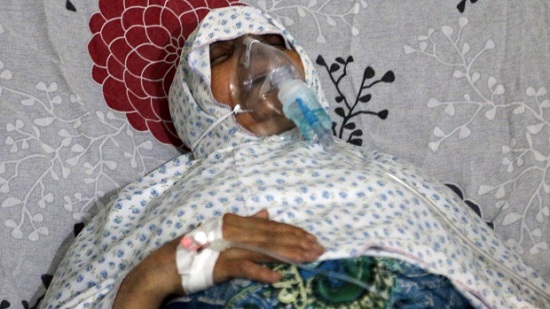Syrian government troops were responsible for two toxic gas attacks and Islamic State militants used sulfur mustard gas, a joint investigation by the United Nations and the global chemical weapons watchdog found on Wednesday, according to a confidential report seen by Reuters.
The year-long UN and Organization for the Prohibition of Chemical Weapons (OPCW) inquiry — unanimously authorized by the UN Security Council — focused on nine attacks in seven areas of Syria, where a separate OPCW fact-finding investigation had already determined that chemical weapons had likely been used.
Eight of the attacks investigated involved the use of chlorine. The inquiry was unable to reach a conclusion in six cases, though it said that three of those cases warranted further investigation.
The results set the stage for a Security Council showdown between the five veto-wielding powers, likely pitting Russia and China against the United States, Britain and France over whether sanctions should be imposed in the wake of the inquiry.
The 15-member Security Council is due to discuss the report next week. UN Secretary-General Ban Ki-moon said the report would be made public after that meeting.
"It is now impossible to deny that the Syrian regime has repeatedly used industrial chlorine as a weapon against its own people," U.S. National Security Council spokesman Ned Price said in a statement. "The United States will work with our international partners to seek accountability through appropriate diplomatic mechanisms," Price said. "We urge all UN member states and parties to the Chemical Weapons Convention, including Russia and Iran, to participate in this effort."
The inquiry found there was sufficient information to conclude that Syrian Arab Air Force helicopters dropped devices that then released toxic substances in Talmenes on April 21, 2014 and Sarmin on March 16, 2015, both in Idlib governorate. Both cases involved the use of chlorine.
The Syrian mission to the United Nations did not immediately respond to a request for comment on the finding of the report.
ISIS accused of using mustard gas
It also determined there was sufficient information to conclude that Islamic State militants were the "only entity with the ability, capability, motive and the means to use sulfur mustard gas in Marea on 21 August, 2015."
Syria agreed to destroy its chemical weapons in 2013 under a deal brokered by Moscow and Washington. The Security Council backed that deal with a resolution that said in the event of non-compliance, "including unauthorized transfer of chemical weapons, or any use of chemical weapons by anyone" in Syria, it would impose measures under Chapter 7 of the UN Charter.
Chapter 7 deals with sanctions and authorization of military force by the Security Council. The body would need to adopt another resolution to impose targeted sanctions - a travel ban and asset freeze - on people or entities linked to the attacks.
However, Russia — a close Syrian ally — and China have previously protected the Syrian government from council action by blocking several resolutions, including a bid to refer the situation in Syria to the International Criminal Court.
"The use of these weapons is abhorrent and we unequivocally condemn those who unleash them," British UN Ambassador Matthew Rycroft told the council on Monday. "This council must stand ready to demonstrate a robust response to this report."
Barrel bomb also employed, probe finds
Deputy U.S. Ambassador to the United Nations Michele Sison told the council on Tuesday: "Those responsible for the use of chemical weapons in Syria must be held accountable for their actions."
In the case of the attack in Sarmin, the UN/OPCW inquiry found that the remnants of the device dropped "are consistent with the construction of a barrel bomb." Barrel bombs are steel drums full of shrapnel and explosives dropped from the air.



